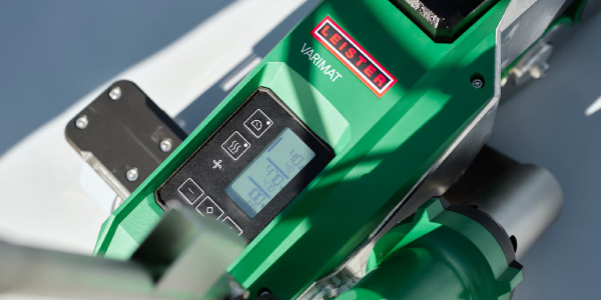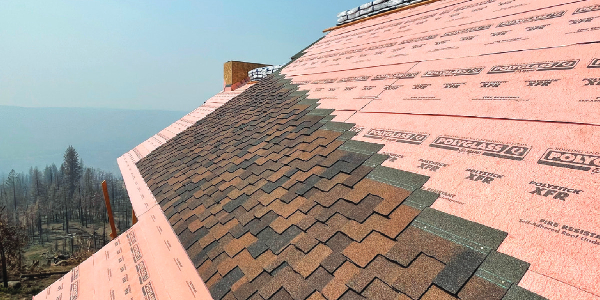Level up your welding game

By Emma Peterson.
Learn what to expect with each of the 2024 VARIMAT heat welder product releases.
In Season 6, Episode 10 of Roofing Road Trips®, Dave Nordentoft from Leister came to talk to Heidi J. Ellsworth about their VARIMAT automatic heat welders. Dave is the roofing products manager at Leister and has been with the company for a decade. Leister has been in the roof welding business since the beginning, launching the VARIMAT line in 1996 which was an evolution of their original Variant machine. 2024 saw another advancement of their role in that part of the industry, with three new releases in the VARIMAT line.
VARIMAT 300
Dave explained that the 300 level of this machine is more compact with an optimized heat delivery system. It is also more balanced, with the added bonus of a customizable weight distribution so you can make the machine operate uniquely for you. Further, this redesign has seen an increase in welding pressure by a significant amount. Dave elaborated, “That'll make it a better, more reliable process, regardless of what kind of membrane or membrane thickness or ambient conditions you have. It's going to really improve that welding process in that reliability.” Other design improvements with this tool include a new air dam system, a relocated power supply and an extendable axel.
VARIMAT 500
In comparison to the 300 level, the 500 generally has the same mechanics with a more high-tech interface. It has an upgraded digital display and the machine records data, such as the hours and distance it has covered. Dave explained one of the key differences, their Monitored Welding Assistant, saying, “This allows users to set parameter limit ranges, plus or minus. So, when the nozzle's engaged and you're actively welding, if there's something that happens, mechanically or electronically, that takes one of those welding parameters outside of that limit range, they're going to get an alarm on the machine.”
VARIMAT 700
The 700 level builds upon the previous levels by adding the Leister Quality System (LQS). This means users can weld and collect a bit more detailed information. Dave explained, “Every time that the nozzle is inserted, the keyed welding data is recording in the background on the machine. That would be the temperature, the speed, the airflow, the incoming voltage into the machine and, at the 700 level, the welding pressure (provided the force sensor is installed).” Another key feature of the 700 level is the ability to document test welds. These are recorded in the project archive and the data report as unique from the actual work. and differentiate them within the system so that you can record the data differently.
Read the transcript or Listen to the podcast to find out more about Leister and the VARIMAT line.
Learn more about Leister in their Coffee Shop Directory or visit www.leister.com.

About Emma
Emma Peterson is a writer at The Coffee Shops and AskARoofer™. Raised in the dreary and fantastical Pacific Northwest, she graduated in 2024 from Pacific University in Oregon with a degree in creative writing and minors in graphic design and Chinese language. Between overthinking everything a little bit, including this bio, she enjoys watching movies with friends, attending concerts and trying to cook new recipes.





















Comments
Leave a Reply
Have an account? Login to leave a comment!
Sign In